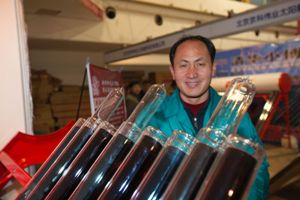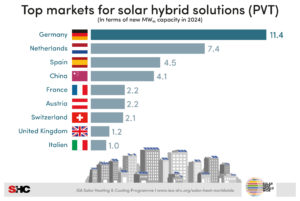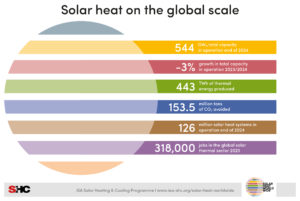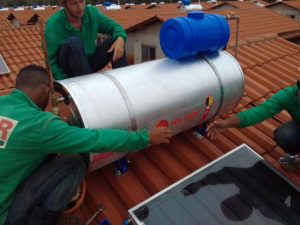Fair Season in China: Three Major Trends
March 9, 2009
 Different vacuum tube technologies in comparison: The full-glass vacuum tube can easily be recognised by the extended and closed top.
Different vacuum tube technologies in comparison: The full-glass vacuum tube can easily be recognised by the extended and closed top.
Photo: Sven Tetzlaff
The 26th January 2009 did not only mark the beginning of the New Year in China, but was at the same time the starting signal for the solar fair season in the People’s Republic. Now, almost no week goes by without another regional trade fair to focus on the domestic solar thermal market. Paying a visit to these fairs will give you an outlook on the technology trends of China’s giant solar thermal industry. The three major ones are:
1) Full-glass heat pipe vacuum tubes
2) Tubes with inner silvering for concentration
3) Balcony collector modules
1) The full glass heat pipe vacuum tube was already unveiled by Zhiqiang Yin, Professor of Tsinghua university, at the ISES 2007 conference in Beijing one and a half years ago. Its main characteristic is that the inner tube of the Sidney tube is extended and closed at the top. There is a small amount of heat transfer liquid within this inner tube. The upper part of the glass tube works like a condenser for the evaporated liquid. A growing number of tube and collector manufacturers produce and assemble this kind of tube. The use of the new full-glass heat pipe vacuum tube is restricted to unpressurised systems and replaces the water-filled direct flow tube. Its main advantages are the non-existence of metal in the tube and an efficiency gain of 14 %, because convection heat losses of conventional direct flow tubes are very high.
 One other trend in China: inside mirror layers for concentration
One other trend in China: inside mirror layers for concentration
Photo: Sven Tetzlaff
2) There are hardly any collectors with a CPC (compound parabolic concentrator) in China since the outside concentration mirror would pollute quickly and lower the performance ratio of the panel. However, every collector panel provider has an interest in maximising the area that effectively draws in the sunlight (aperture area).
The R&D departments of China’s industry tried hard to escape this dilemma by fitting a mirror into the vacuum space at the back – either in form of mirrored sheets or as a layer on the inside of the ‘outer tube’ (inside the vacuum). The inside layer is the more popular technology. Several collector manufacturers included this extra feature in the production models they showcased at recent fairs.
3) The number of detached houses is quite small – especially in the mega-cities in the eastern part of China. Nevertheless, inhabitants living in blocks of flats also like to purchase solar water heaters. Roof space in these housing estates is limited. It is therefore clear that not everybody can benefit from cheap solar-heated water. Most Chinese homes, however, possess a balcony. System suppliers are therefore working on systems which can be used on a balcony or façade. Manufacturers prefer U-pipe vacuum tubes for the horizontal installation.
The text was written by Sven Tetzlaff, a specialist for solar thermal technology. His office is based in Hangzhou in the province of Zhejiang, China. E-Mail: mail@sventetzlaff.de


